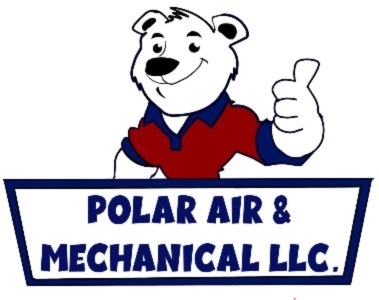
Where you aware that more than half of your home’s energy costs are needed for your heating and cooling? That’s why it’s essential to have an energy-efficient HVAC system.
Furnace efficiency standards were last revised to an Annual Fuel Utilization Efficiency (AFUE) rating of 80% in 2015. This rating system illustrates how effective your furnace is at natural gas into heat. An AFUE rating of 80% means your furnace wastes about 20% of the fuel it uses while producing heat.
In 2022, the Biden Administration proposed new energy-efficiency standards for residential gas furnaces that would substantially lower emissions, save money and stimulate sustainability.
These revised standards are estimated to:
- Save Americans $1.9 billion annually.
- Cut carbon emissions by 373 million metric tons and methane emissions by 5.1 million tons over three decades, the equivalent of what 61 million homes emit each year.
Starting in 2029, the proposed rule would require all new gas furnaces to feature AFUE ratings of 95%. This means furnaces would convert nearly 100% of the gas into usable heat.
Considering these guidelines, you might be asking yourself what does that mean for my existing furnace? As of now, very little, as the proposed rule wouldn’t go into effect until 2029 at the earliest and does not affect furnaces that are already in use.
But if you are considering furnace replacement in soon, highly energy-efficient furnaces are now available. Learn how these furnaces can save you money on your utility bills.
Guide to Condensing Furnaces
How Condensing Furnaces Work
A condensing furnace is a type of heating system that uses a secondary heat exchanger to capture wasted heat from the furnace's exhaust gases. This decreases the amount of energy wasted, increases energy efficiency and lowers carbon-monoxide emissions. It also will take less natural gas to create the same amount of heat when compared to other types of furnaces.
How Condensing Furnaces Differ from Non-Condensing Furnaces
The primary difference between a condensing furnace and a non-condensing furnace is that the former uses a secondary heat exchanger to capture any wasted heat from its exhaust gases, while the latter does not.
Equipment Lifespan
The life span of a condensing furnace will depend on the brand, model and other factors. Generally speaking, a condensing furnace is likely to last between 10-20 years with appropriate maintenance and regular service. If your heating system doesn’t have regular furnace maintenance, the unit may have a significantly shorter life span.
Why Condensing Furnaces Cost More
Generally, condensing furnaces enhanced precision is a lot more efficient than standard, single-speed furnaces, as it only consumes the minimum amount of energy required to heat your home, saving you money in the long run.
Most variable-speed furnaces are condensing furnaces, although a few are available in non-condensing models with lower AFUE ratings. In order for a furnace to be classified as a condensing furnace, it must offer an AFUE rating of 90% or higher.
Do Variable-Speed Furnaces Run Constantly?
A variable-speed furnace doesn’t operate all the time. Instead, it runs at different speeds depending on the temperature in your Myrtle Beach home as well as the amount of energy it uses to reach that temperature.
When sufficient energy is necessary to maintain your desired temperature level, the furnace will increase to a higher speed in order to keep up with demand. This allows for more efficient heating in your home while also offering quieter operation.
Guide to Two-Stage Furnaces
Two-Stage Furnaces: What They Are and How They Work
A two-stage furnace is a type of heating system that utilizes two different stages of operation — high and low. During the low stage, the furnace runs at a reduced capacity as a way to maintain the desired temperature for your home more efficiently. During the high stage, the furnace will instead function at peak capacity to satisfy demands for increased heat. With a two-stage furnace, you can enjoy greater energy efficiency and comfortable temperatures throughout your home.
While two-stage furnaces are extremely efficient, not all all types are condensing furnaces.
Does a Two-Stage Furnace Run All the Time?
A two-stage furnace won’t run all the time. In the low stage of operation, the furnace operates at diminished capacity in order to maintain a desired temperature more efficiently within your home. When additional energy is needed to maintain the set temperature, the unit will switch to its high stage and operates at full capacity. As such, two-stage furnaces are able to help reduce energy costs without operating constantly.
Contrasting Two-Stage and Variable-Speed Furnaces
Two-stage furnaces have two stages of operation, low and high. During the low stage, the furnace runs at reduced capacity as a way to sustain a desired temperature within your home. When additional warmth or cooling is necessary, the furnace will switch to its high stage and operate at maximum capacity.
Variable-speed furnaces, meanwhile, can operate at multiple speeds in order to maintain a comfortable temperature at home. With more options for temperature settings, you also have more flexibility for heating you home and can enjoy greater savings on energy bills.
Differences Between One- and Two-Stage Furnaces
One-stage furnaces have a single stage fan speed and operate either at full capacity or not at all. Consequently, the furnace is always running in order to maintain a desired comfort level within your home.
Two-stage furnaces, by comparison, have two stages of operation, low and high. During the low stage, the furnace runs at lower capacity in order to maintain the desired temperature more efficiently. When a greater demand for warmth or cooling is needed, the furnace will switch to its high stage and operate at peak capacity.
Schedule Your Furnace Installation with Polar Air & Mechanical Today
It takes experience and dedication to stay up to date about furnace technology advancements. That’s why Polar Air & Mechanical specialists are here to help with a no-obligation, no-pressure quote for furnace installation. We’ll assess your home, your heating needs and your budget before helping you find the right solution. Call us at 843-484-3783 to get started today!


